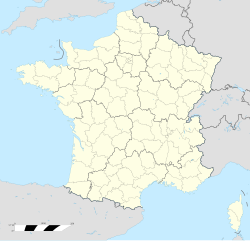This article needs additional citations for verification .(September 2014) |
| Battle of Port Cros | |||||||
|---|---|---|---|---|---|---|---|
| Part of the Mediterranean Theater of World War II | |||||||
 Port Cros (left) from space and Île du Levant (right). | |||||||
| |||||||
| Belligerents | |||||||
| Commanders and leaders | |||||||
| | |||||||
| Strength | |||||||
| Land: 1,800 infantry Sea: USS Somers | Land: 5 forts Sea: UJ6081 SG21 | ||||||
| Casualties and losses | |||||||
| 9 killed | UJ6081 and SG21 sunk 5 forts captured | ||||||
Location within France | |||||||
The Battle of Port Cros took place during World War II off the French Riviera in the Mediterranean Sea on the island of Port-Cros. The battle began when a United States Navy warship encountered two German warships in August 1944 while supporting the Allied Operation Dragoon. It was one of the few surface engagements fought between the US Navy and the German Kriegsmarine . Later that day, the combined American and Canadian 1st Special Service Force (the Devil's Brigade) was dropped by LST 32 on the main island and captured the German-held positions.


